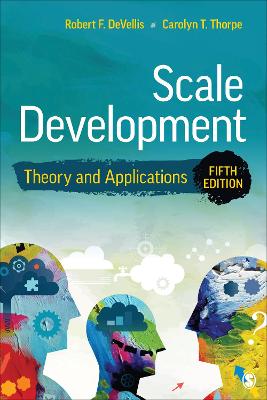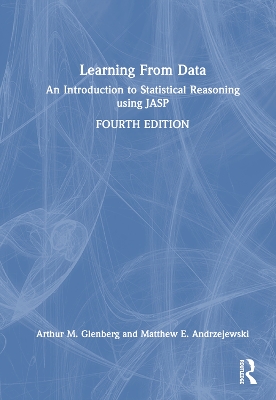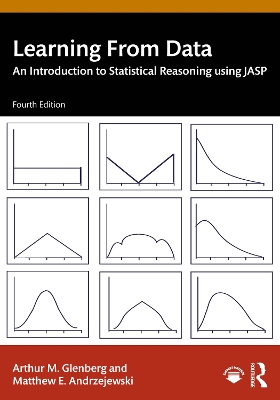Scale Development
 portes grátis
portes grátis
Scale Development
Theory and Applications
Thorpe, Carolyn T.; DeVellis, Robert F.
SAGE Publications Inc
03/2022
320
Mole
Inglês
9781544379340
15 a 20 dias
470
Descrição não disponível.
Preface
Acknowledgments
About the Authors
Chapter 1 * Overview
General Perspectives on Measurement
Historical Origins of Measurement in Social Science
Later Developments in Measurement
The Role of Measurement in the Social Sciences
Summary and Preview
Exercises
Chapter 2 * Understanding the Latent Variable
Constructs Versus Measures
Latent Variable as the Presumed Cause of Scale Item Values
Path Diagrams
Further Elaboration of the Measurement Model
Parallel Tests
Alternative Models
Choosing a Causal Model
Exercises
Note
Chapter 3 * Scale Reliability
Methods Based on the Analysis of Variance
Continuous Versus Dichotomous Items
Internal Consistency
Coefficient Alpha
Remedies to Alpha's Limitations
Coefficient Omega (?)
Reliability Based on Correlations Between Scale Scores
Reliability and Statistical Power
Generalizability Theory
Summary
Exercises
Notes
Chapter 4 * Scale Validity
Content Validity
Criterion-Related Validity
Construct Validity
What About Face Validity?
Exercises
Chapter 5 * Guidelines in Scale Development
Step 1: Determine Clearly What It Is You Want to Measure
Step 2: Generate an Item Pool
Step 3: Determine the Format for Measurement
Step 4: Have Initial Item Pool Reviewed by Experts
Step 5: Cognitive Interviewing
Step 6: Consider Inclusion of Validation Items
Step 7: Administer Items to a Development Sample
Step 8: Evaluate the Items
Step 9: Optimize Scale Length
Exercises
Note
Chapter 6 * Factor Analysis
Overview of Factor Analysis
Conceptual Description of Factor Analysis
Bifactor and Hierarchical Factor Models
Interpreting Factors
Principal Components Versus Common Factors
Confirmatory Factor Analysis
Using Factor Analysis in Scale Development
Sample Size
Conclusion
Exercises
Chapter 7 * The Index
How an Index Differs From a Scale
Rules of Thumb for Differentiating an Index From a Scale
Is It a Scale or an Index? Formal Methods for Distinguishing Effect and Causal Indicators
Steps in Developing and Evaluating an Index
Hybrid Measures
Methods Based on Structural Equation Modeling
Criticisms of Index Composites
Exercises
Note
Chapter 8 * An Overview of Item Response Theory
Item Difficulty
Item Discrimination
Guessing, or False Positives
Item-Characteristic Curves
IRT Applied to Multiresponse Items
Exercises
Chapter 9 * Measurement in the Broader Research Context
Before Scale Development
After Scale Administration
Final Thoughts
Exercise
References
Acknowledgments
About the Authors
Chapter 1 * Overview
General Perspectives on Measurement
Historical Origins of Measurement in Social Science
Later Developments in Measurement
The Role of Measurement in the Social Sciences
Summary and Preview
Exercises
Chapter 2 * Understanding the Latent Variable
Constructs Versus Measures
Latent Variable as the Presumed Cause of Scale Item Values
Path Diagrams
Further Elaboration of the Measurement Model
Parallel Tests
Alternative Models
Choosing a Causal Model
Exercises
Note
Chapter 3 * Scale Reliability
Methods Based on the Analysis of Variance
Continuous Versus Dichotomous Items
Internal Consistency
Coefficient Alpha
Remedies to Alpha's Limitations
Coefficient Omega (?)
Reliability Based on Correlations Between Scale Scores
Reliability and Statistical Power
Generalizability Theory
Summary
Exercises
Notes
Chapter 4 * Scale Validity
Content Validity
Criterion-Related Validity
Construct Validity
What About Face Validity?
Exercises
Chapter 5 * Guidelines in Scale Development
Step 1: Determine Clearly What It Is You Want to Measure
Step 2: Generate an Item Pool
Step 3: Determine the Format for Measurement
Step 4: Have Initial Item Pool Reviewed by Experts
Step 5: Cognitive Interviewing
Step 6: Consider Inclusion of Validation Items
Step 7: Administer Items to a Development Sample
Step 8: Evaluate the Items
Step 9: Optimize Scale Length
Exercises
Note
Chapter 6 * Factor Analysis
Overview of Factor Analysis
Conceptual Description of Factor Analysis
Bifactor and Hierarchical Factor Models
Interpreting Factors
Principal Components Versus Common Factors
Confirmatory Factor Analysis
Using Factor Analysis in Scale Development
Sample Size
Conclusion
Exercises
Chapter 7 * The Index
How an Index Differs From a Scale
Rules of Thumb for Differentiating an Index From a Scale
Is It a Scale or an Index? Formal Methods for Distinguishing Effect and Causal Indicators
Steps in Developing and Evaluating an Index
Hybrid Measures
Methods Based on Structural Equation Modeling
Criticisms of Index Composites
Exercises
Note
Chapter 8 * An Overview of Item Response Theory
Item Difficulty
Item Discrimination
Guessing, or False Positives
Item-Characteristic Curves
IRT Applied to Multiresponse Items
Exercises
Chapter 9 * Measurement in the Broader Research Context
Before Scale Development
After Scale Administration
Final Thoughts
Exercise
References
Este título pertence ao(s) assunto(s) indicados(s). Para ver outros títulos clique no assunto desejado.
scale development;scale reliability and validity;factor analysis;measurement;indices;item response theory
Preface
Acknowledgments
About the Authors
Chapter 1 * Overview
General Perspectives on Measurement
Historical Origins of Measurement in Social Science
Later Developments in Measurement
The Role of Measurement in the Social Sciences
Summary and Preview
Exercises
Chapter 2 * Understanding the Latent Variable
Constructs Versus Measures
Latent Variable as the Presumed Cause of Scale Item Values
Path Diagrams
Further Elaboration of the Measurement Model
Parallel Tests
Alternative Models
Choosing a Causal Model
Exercises
Note
Chapter 3 * Scale Reliability
Methods Based on the Analysis of Variance
Continuous Versus Dichotomous Items
Internal Consistency
Coefficient Alpha
Remedies to Alpha's Limitations
Coefficient Omega (?)
Reliability Based on Correlations Between Scale Scores
Reliability and Statistical Power
Generalizability Theory
Summary
Exercises
Notes
Chapter 4 * Scale Validity
Content Validity
Criterion-Related Validity
Construct Validity
What About Face Validity?
Exercises
Chapter 5 * Guidelines in Scale Development
Step 1: Determine Clearly What It Is You Want to Measure
Step 2: Generate an Item Pool
Step 3: Determine the Format for Measurement
Step 4: Have Initial Item Pool Reviewed by Experts
Step 5: Cognitive Interviewing
Step 6: Consider Inclusion of Validation Items
Step 7: Administer Items to a Development Sample
Step 8: Evaluate the Items
Step 9: Optimize Scale Length
Exercises
Note
Chapter 6 * Factor Analysis
Overview of Factor Analysis
Conceptual Description of Factor Analysis
Bifactor and Hierarchical Factor Models
Interpreting Factors
Principal Components Versus Common Factors
Confirmatory Factor Analysis
Using Factor Analysis in Scale Development
Sample Size
Conclusion
Exercises
Chapter 7 * The Index
How an Index Differs From a Scale
Rules of Thumb for Differentiating an Index From a Scale
Is It a Scale or an Index? Formal Methods for Distinguishing Effect and Causal Indicators
Steps in Developing and Evaluating an Index
Hybrid Measures
Methods Based on Structural Equation Modeling
Criticisms of Index Composites
Exercises
Note
Chapter 8 * An Overview of Item Response Theory
Item Difficulty
Item Discrimination
Guessing, or False Positives
Item-Characteristic Curves
IRT Applied to Multiresponse Items
Exercises
Chapter 9 * Measurement in the Broader Research Context
Before Scale Development
After Scale Administration
Final Thoughts
Exercise
References
Acknowledgments
About the Authors
Chapter 1 * Overview
General Perspectives on Measurement
Historical Origins of Measurement in Social Science
Later Developments in Measurement
The Role of Measurement in the Social Sciences
Summary and Preview
Exercises
Chapter 2 * Understanding the Latent Variable
Constructs Versus Measures
Latent Variable as the Presumed Cause of Scale Item Values
Path Diagrams
Further Elaboration of the Measurement Model
Parallel Tests
Alternative Models
Choosing a Causal Model
Exercises
Note
Chapter 3 * Scale Reliability
Methods Based on the Analysis of Variance
Continuous Versus Dichotomous Items
Internal Consistency
Coefficient Alpha
Remedies to Alpha's Limitations
Coefficient Omega (?)
Reliability Based on Correlations Between Scale Scores
Reliability and Statistical Power
Generalizability Theory
Summary
Exercises
Notes
Chapter 4 * Scale Validity
Content Validity
Criterion-Related Validity
Construct Validity
What About Face Validity?
Exercises
Chapter 5 * Guidelines in Scale Development
Step 1: Determine Clearly What It Is You Want to Measure
Step 2: Generate an Item Pool
Step 3: Determine the Format for Measurement
Step 4: Have Initial Item Pool Reviewed by Experts
Step 5: Cognitive Interviewing
Step 6: Consider Inclusion of Validation Items
Step 7: Administer Items to a Development Sample
Step 8: Evaluate the Items
Step 9: Optimize Scale Length
Exercises
Note
Chapter 6 * Factor Analysis
Overview of Factor Analysis
Conceptual Description of Factor Analysis
Bifactor and Hierarchical Factor Models
Interpreting Factors
Principal Components Versus Common Factors
Confirmatory Factor Analysis
Using Factor Analysis in Scale Development
Sample Size
Conclusion
Exercises
Chapter 7 * The Index
How an Index Differs From a Scale
Rules of Thumb for Differentiating an Index From a Scale
Is It a Scale or an Index? Formal Methods for Distinguishing Effect and Causal Indicators
Steps in Developing and Evaluating an Index
Hybrid Measures
Methods Based on Structural Equation Modeling
Criticisms of Index Composites
Exercises
Note
Chapter 8 * An Overview of Item Response Theory
Item Difficulty
Item Discrimination
Guessing, or False Positives
Item-Characteristic Curves
IRT Applied to Multiresponse Items
Exercises
Chapter 9 * Measurement in the Broader Research Context
Before Scale Development
After Scale Administration
Final Thoughts
Exercise
References
Este título pertence ao(s) assunto(s) indicados(s). Para ver outros títulos clique no assunto desejado.







